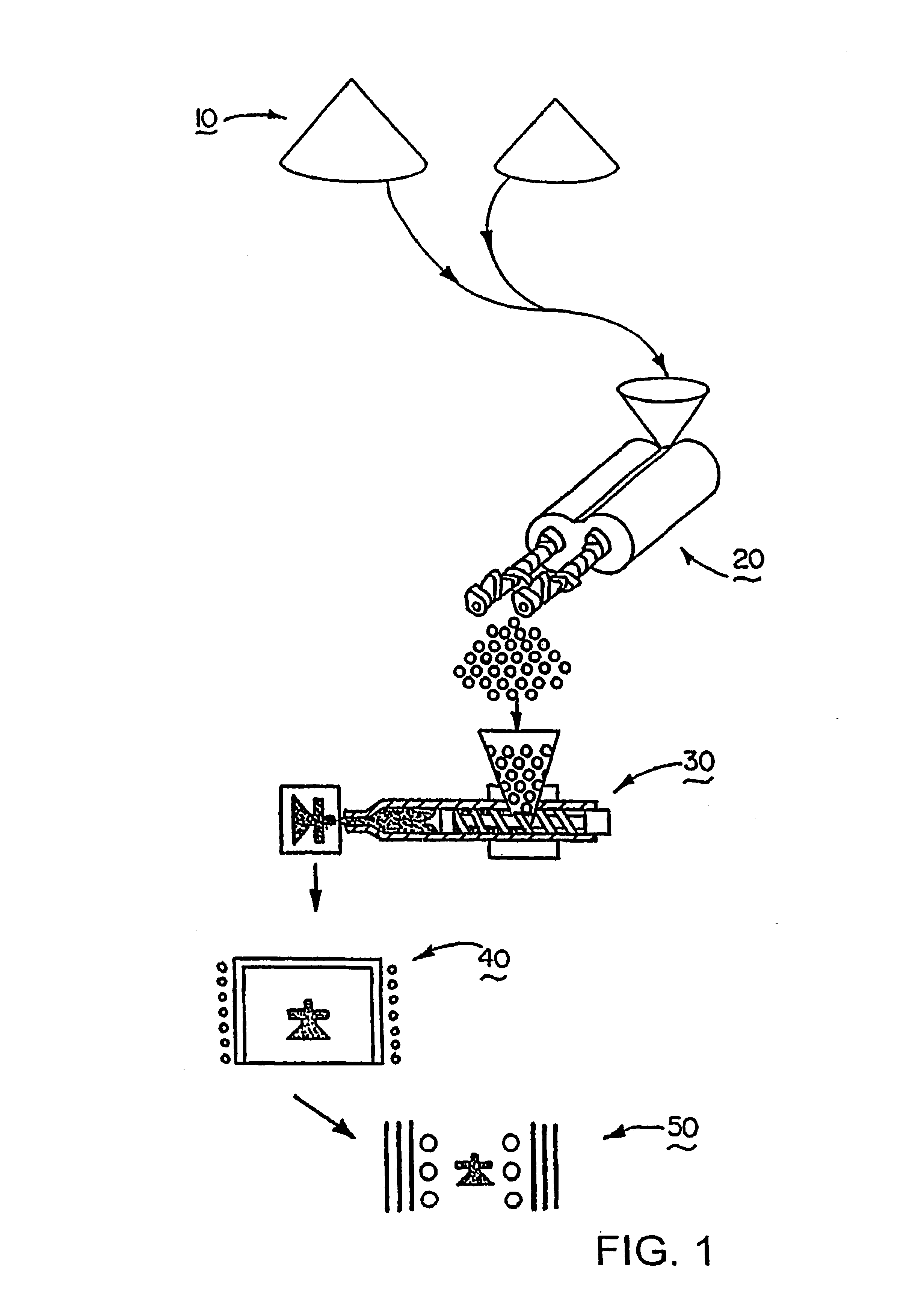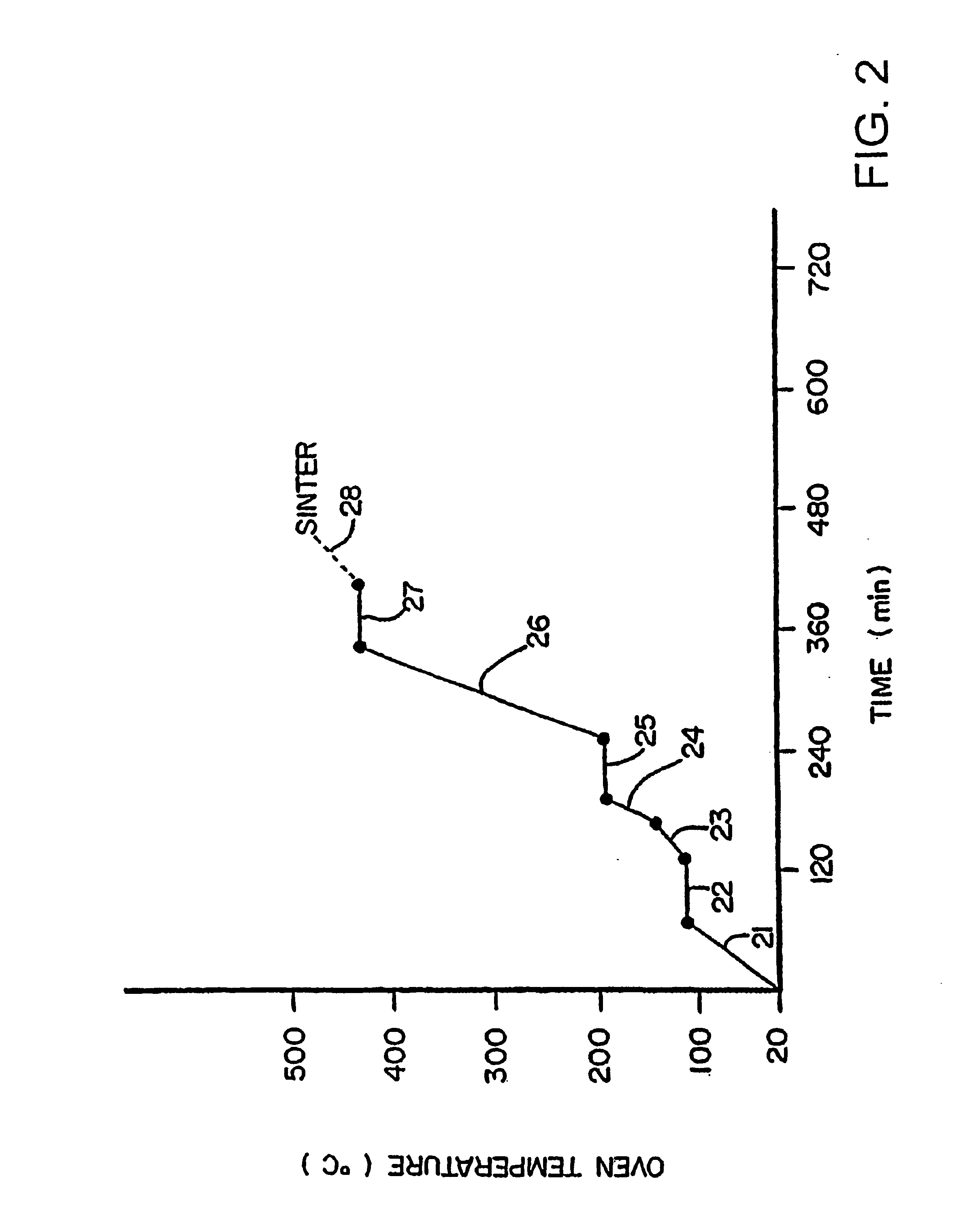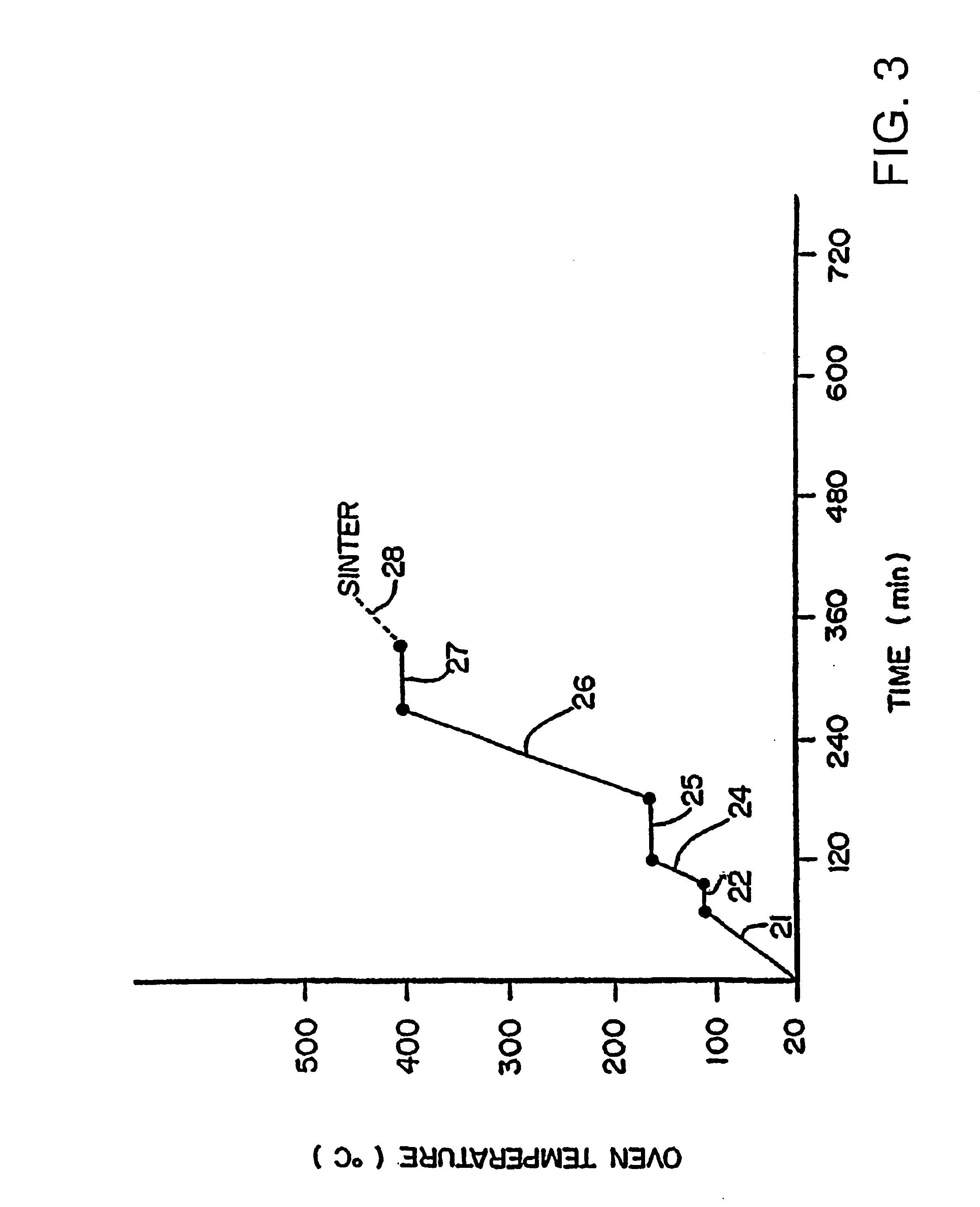Binder system and method for particulate material cross-reference to related application
a technology of particulate material and binding system, which is applied in the field of binding system and method of particulate material cross-reference to related applications, can solve the problems of direct removal of pim binder during sintering, p&s is limited to simple parts, and the binder is necessary to the process, and achieves the effects of high thixotropic energy, simple and environmentally safe products
- Summary
- Abstract
- Description
- Claims
- Application Information
AI Technical Summary
Benefits of technology
Problems solved by technology
Method used
Image
Examples
example 1
A green composition comprising a binder composition and an inorganic powder comprising 98% carbonyl iron doped with 2% nickel as a sintering aid, according to the present invention, is prepared as follows.
poly(propylene carbonate)59.43wt %ethylenebisstearamide ACRAWAX ®C25.15wt %guanidine ethyl hexanoate 8.49wt %guanidine stearate 6.93wt %Total100.0 wt %
The above binder composition does not include either additive, the debinding accelerator or the debinding extender. The binder composition is prepared by combining the ingredients in a twin screw compounding extruder, heating to about 120-130° C. until the mixture is substantially homogenous, and then pelletizing the binder composition in, e.g., a strand cutter pelletizing apparatus. This binder composition is designated APEX™ 201.
The ingredients for the green composition comprise 59 vol % carbonyl iron / nickel and 41 vol % of pellets of the above binder composition, the green composition components are combined, compounded and pellet...
example 2
A green composition comprising a binder composition and silica, according to the present invention, is prepared as follows.
poly(propylene carbonate)51.43wt %ethylenebisstearamide ACRAWAX ®C29.15wt %guanidine ethyl hexanoate9.48wt %guanidine stearate9.93wt %2,5-dimethyl-2,5-di(t-butylperoxy)hexane0.01wt %Total100.00
The binder composition is prepared by combining the ingredients in a twin screw compounding extruder, heating to about 100° C. for about 10 minutes, until the mixture is substantially homogenous, and then pelletizing the binder composition in, e.g., a strand cutter pelletizing apparatus. This binder composition is designated APE™ 203.
The ingredients for the green composition comprise 65 vol % silica and 35 vol % of pellets of the above binder composition. These components are combined, compounded and pelletized in a twin screw compounding extruder as described above. Expressed on a weight basis, the green composition comprises 77 wt % silica and 23 wt % of the above binder...
example 3
A green composition comprising a binder composition and titanium, according to the present invention, is prepared as follows.
poly(propylene carbonate) Q-PAC ™ 4052.43wt %ethylenebisstearamide ACRAWAX ®C20.15wt %guanidine ethyl hexanoate8.49wt %guanidine stearate6.94wt %atactic polypropylene Mn ≅ 50,00012.00wt %Total100.00wt %
The binder composition is prepared by combining the ingredients in a twin screw compounding extruder, heating to about 100° C. for about 10 minutes, until the mixture is substantially homogenous, and then pelletizing the binder composition in, e.g., a strand cutter pelletizing apparatus. This binder composition is designated APEX™ 204.
The ingredients for the green composition comprise 59 vol % titanium and 41 vol % of pellets of the above binder composition. These components are combined, compounded and pelletized in a twin screw compounding extruder as described above. Expressed on a weight basis, the green composition comprises 86 wt % titanium and 14 wt % of ...
PUM
| Property | Measurement | Unit |
|---|---|---|
| temperature | aaaaa | aaaaa |
| temperature | aaaaa | aaaaa |
| temperatures | aaaaa | aaaaa |
Abstract
Description
Claims
Application Information
 Login to View More
Login to View More - R&D
- Intellectual Property
- Life Sciences
- Materials
- Tech Scout
- Unparalleled Data Quality
- Higher Quality Content
- 60% Fewer Hallucinations
Browse by: Latest US Patents, China's latest patents, Technical Efficacy Thesaurus, Application Domain, Technology Topic, Popular Technical Reports.
© 2025 PatSnap. All rights reserved.Legal|Privacy policy|Modern Slavery Act Transparency Statement|Sitemap|About US| Contact US: help@patsnap.com



